Not the Venus of Urbino, not theAmor sacro e amor profano: it was the Averoldi Polyptych, a large oil-on-poplar-wood altarpiece, the work that Titian Vecellio loved more than any of his other creations. Or at least that is what Alfonso I d’Este’s ambassador to Venice, Jacopo Tibaldi, wrote in a letter dated December 1, 1520: “ [...] et epso [Tiziano] disse a tutti noi, ch’eravamo ivi, ch’el l’era la migliore pictura, ch’el facesse mai.” The Averoldi polyptych is preserved in the neoclassical church of Santi Nazaro e Celso in Brescia, where it arrived in 1522: the fifth centenary of the execution of the polyptych has provided the occasion to erect, right in front of the work, a special ramp leading “Face to face with Titian,” as per the title of the initiative scheduled from May 28 to July 3, 2022, created with the ’objective of allowing the public to admire, for the first time, the famous polyptych from a totally unprecedented perspective, and at a distance of only two meters (the work is in fact placed very high up and normally those who enter the church see it from below and from a distance).
Titian Vecellio, in the sixteenth century, was living an extremely happy and prolific period and was driven toward ever greater creative tension when, by fortuitous chance, he met Bishop Altobello Averoldi. The latter was born around 1468, in the castle of Drugolo, to one of the most influential families in Brescia. He completed legal and theological studies between Padua and Pavia and, at a very young age, arrived at the papal court thanks to his uncle Bartholomew, archbishop of Split. It was 1515 when the scion of the Averoldi house was awarded by Pope Leo X the provostship of San Nazaro, for which, to be fair, countless premises had already been laid since 1502. Altobello decided to revive his image by making shrewd and farsighted choices, taking on some of the expenses for the completion of the building and consecrating the church for the second time on May 30, 1517. This was only the first of the expenses borne by the prelate, who, in order to give greater luster to his temple, commissioned Titian to execute the marvelous polyptych intended to adorn the high altar.
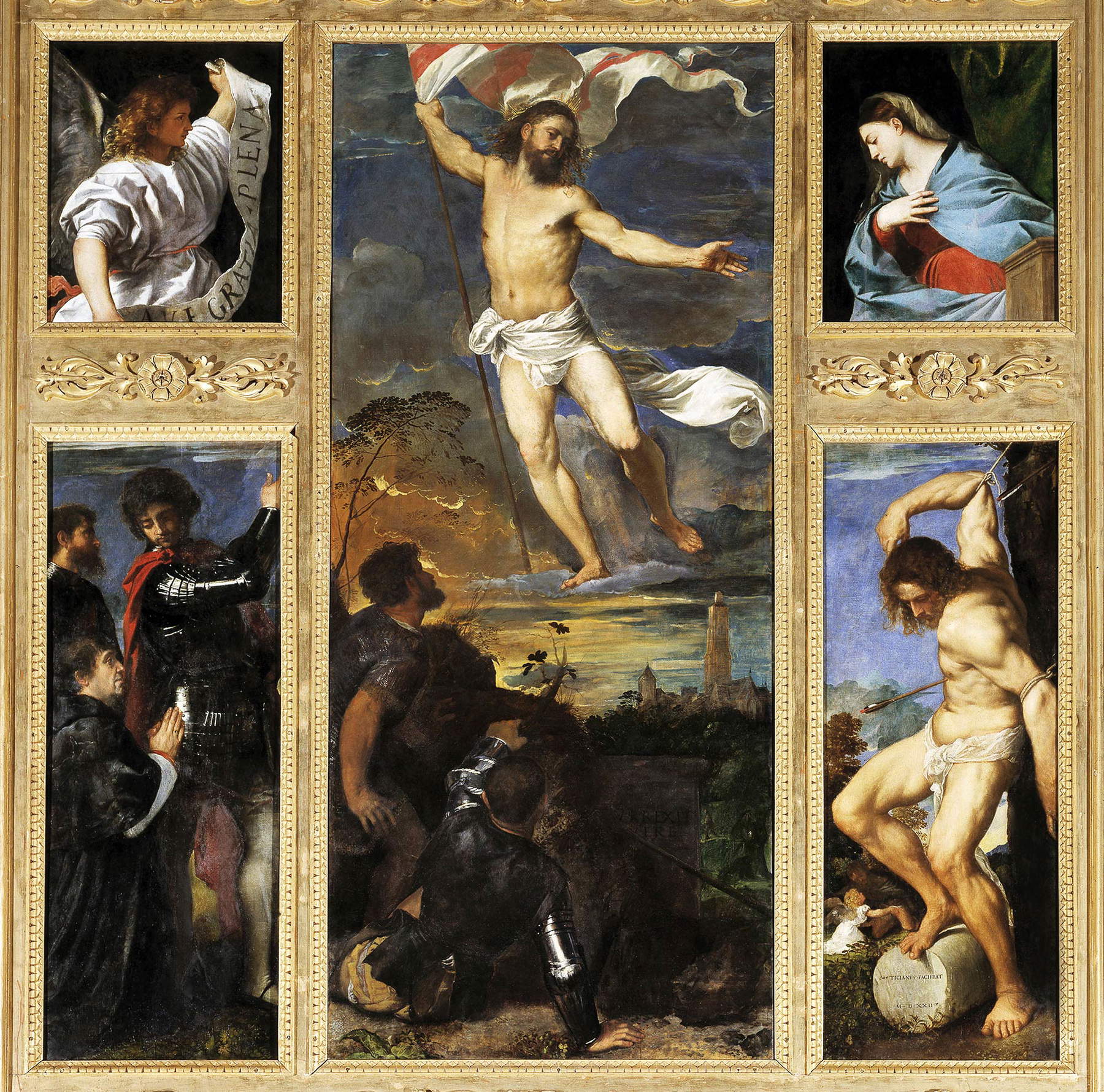
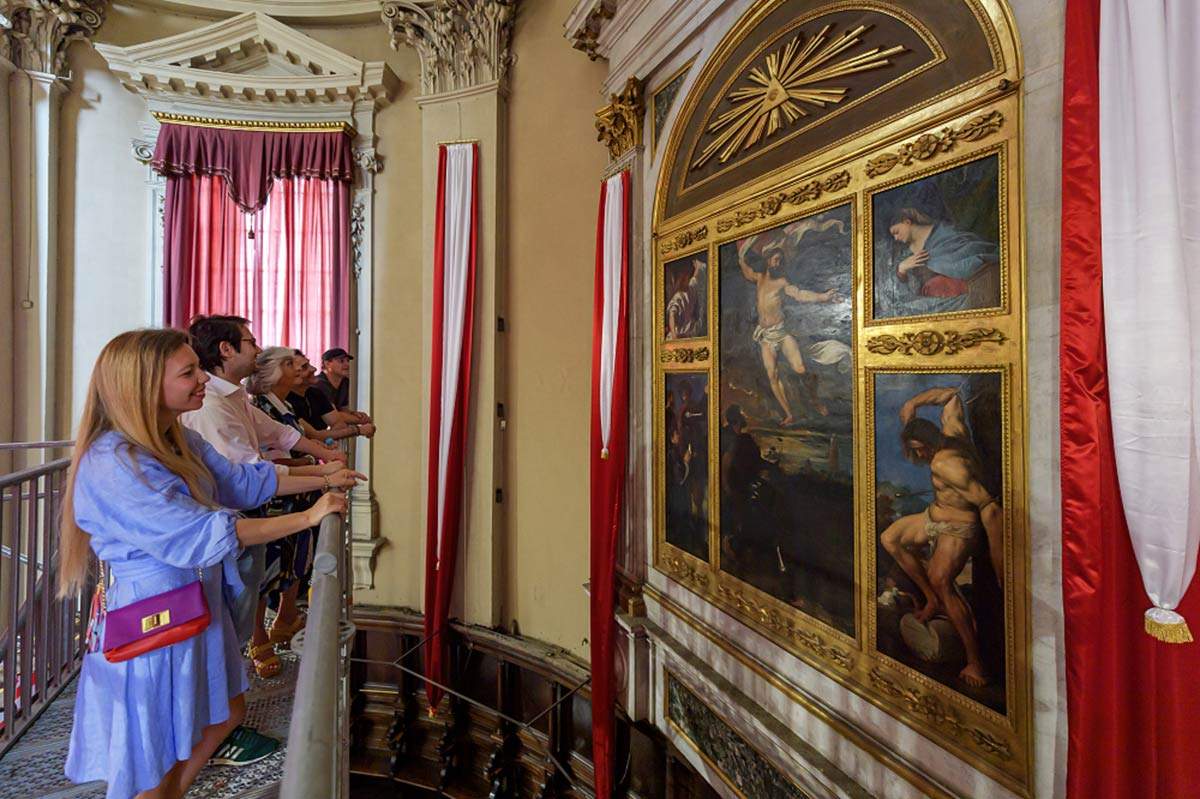
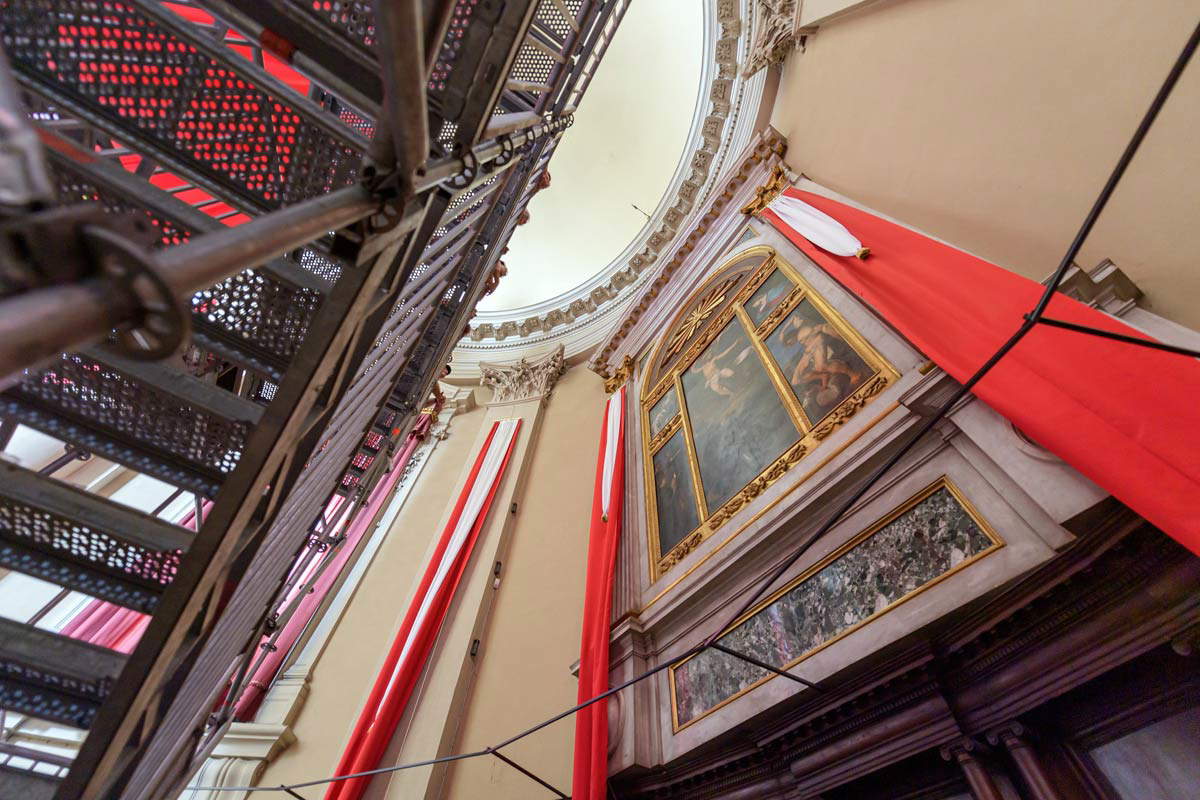

We do not know, with precise certainty, when the plots of the painter’s and the ecclesiastic’s lives intertwined, but what is absolutely certain is that the polyptych was commissioned from Titian between 1517 (the year of Averoldi’s appointment as apostolic nuncio) and 1519. Thanks to sources of the time, we know that the realization of the work required Titian’s “long practice,” so much so that the artist delayed the delivery of countless commissions, including the three Bacchanals intended to decorate the private study of the Duke of Ferrara Alfonsi I d’Este. But the constant delays, hesitations, and time dilation only increased the poignant naturalism of his polyptych, and the work won the admiration of all, especially one man: Jacopo Tebaldi.
Tebaldi, Alfonso I d’Este’s ambassador to Venice, was thunderstruck by the sublime beauty of Saint Sebastian, and to please the duke of Este he planned the clumsy and wicked attempt to snatch the painting from Averoldi. On December 1, 1520, the ambassador wrote to Alfonso I d’Este: "Heri fui a veder la pictura di Sancto Sebastiano, che ha facto magistro Titiano, et vi trovai multi de questa terra, quali cum grande admiratione la vedevano, et laudavano, et epso disse a tutti noi, ch’eramo ivi, ch’el’era la migliore pictura ch’el facesse mai. " He added, shortly afterwards, that he told Titian that leaving that immense masterpiece to a priest would be a waste and that he would do better to sell the saint’s table to the duke.
The astute Tibaldi succeeded, without too much effort, in convincing the young Vecellio to replace Averoldi’s Saint Sebastian with a replica that would present some variations and sell the original to the duke of Este. To the prelate’s great good fortune, perhaps after quick political reckoning or because he was intimidated by Averoldi’s power, Alfonso I d’Este renounced the licentious purchase and on December 23, 1520, informed Tibaldi of his decision: “[...] havendo noi pensato sopra quella cosa del sancto se(bastiano)ci risolvemo di non voler fare questa ingiuria a quello Reverendissimo Legato et che esso Titiano pensa pure di servirci in quell’opera ch’el dee far per noi, che per ora non lo gravamo ad altro che a questo.”
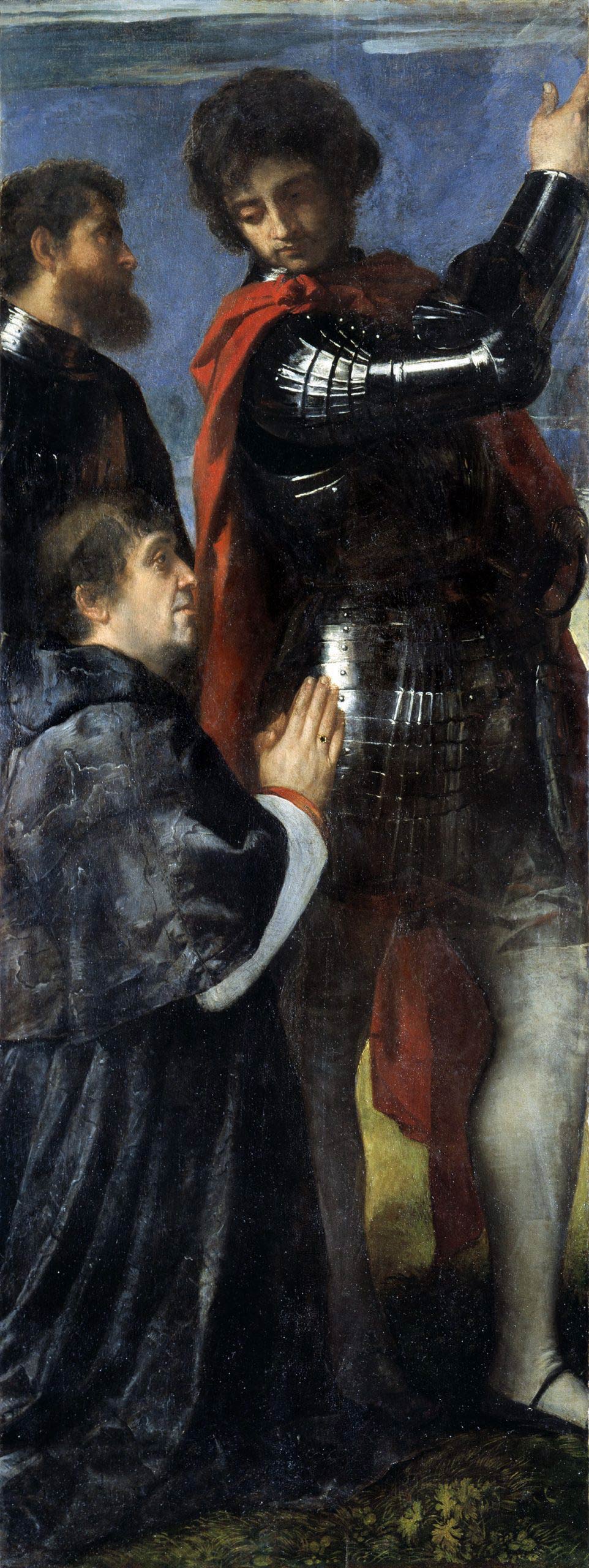
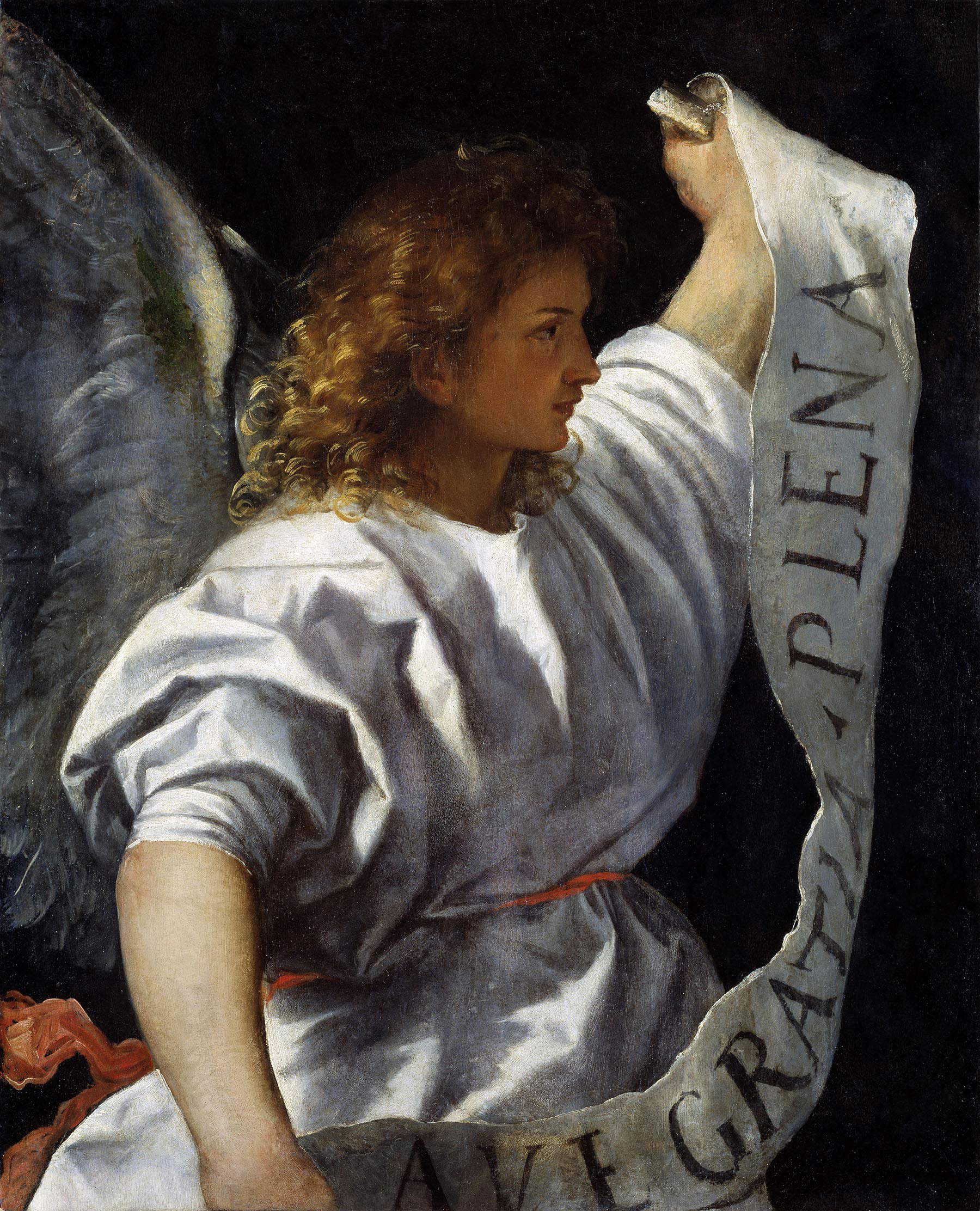
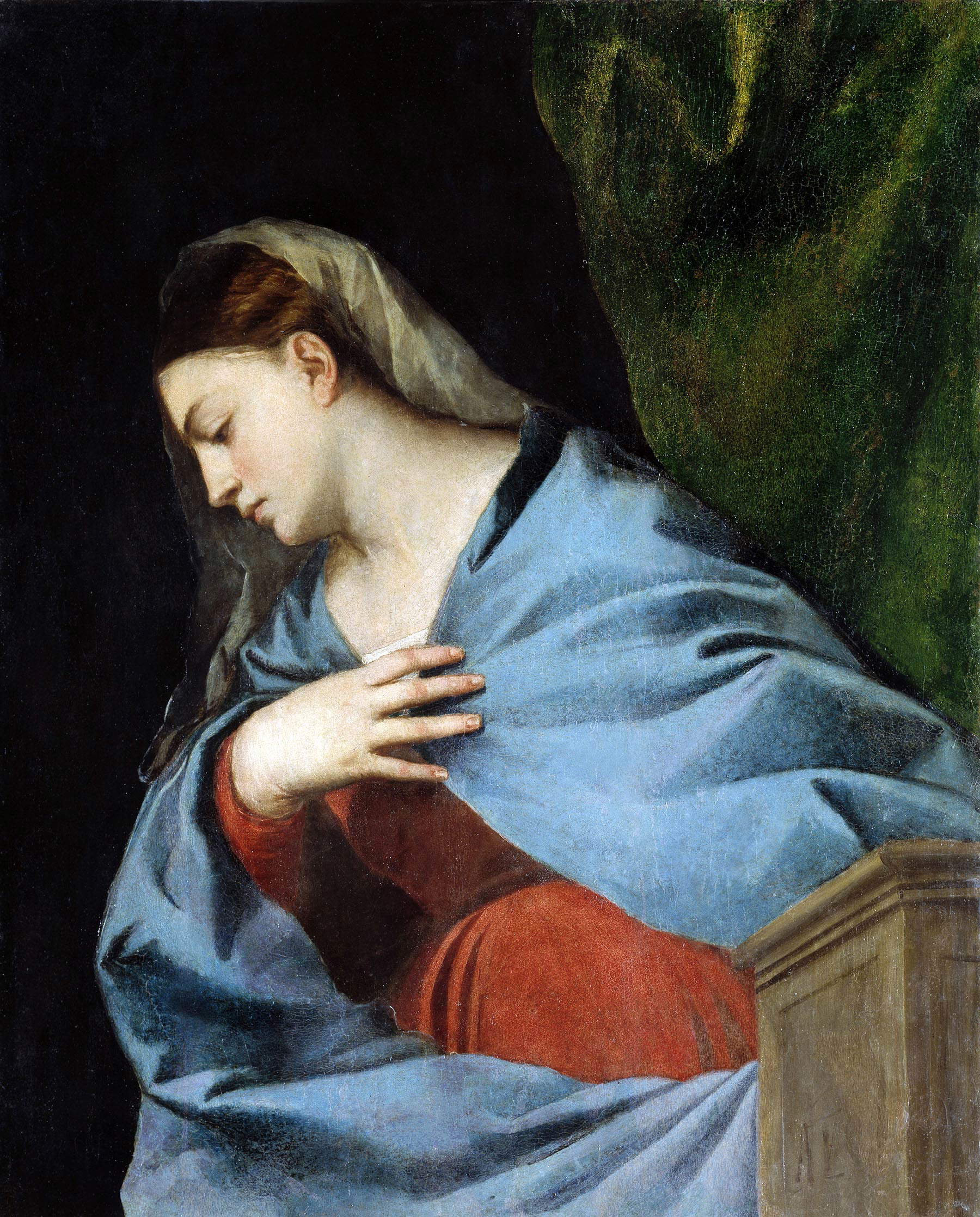
Thus ended this strange story filled with twists and turns: Vecellio could finally work undisturbed and complete the Averoldi polyptych, but not without endless tribulations, reconsiderations, and changes in the course of the work. Proof of this are the countless reconsiderations visible to the naked eye such as the change in the position of the legs and the loincloth encircling the hips of the risen Christ, although the most glaring ones concern the two panels of the annunciation. In fact, X-rays have shown that Titian had mistakenly painted the announcing angel and the Virgin Announced in a mirror-image manner than we can observe now. Other uncertainties and in-progress changes, put on display by the X-rays, are characterized by an early drafting of the foot of Saint Sebastian that was larger and moved further to the left and that the sensitive painter decided to set back to leave more space for the figure of Saint Roch.
Titian’s feverish creative genius, despite his stumbling blocks, succeeded in bringing to life an incredible work.So strong and sublime, that to the untrained eye it could almost appear to be a work by Caravaggio precisely because of the incredible vital energy it unleashes.Titian, with the Averoldi Polyptych, created a real, imminent work that makes the faithful viewer, along with the two astonished soldiers in the central panel, of something real and present.
The polyptych consists of five panels of three different sizes. In the center stands the Resurrection of Christ, on the left are Saints Nazareth and Celsus with the donor, on the right St. Sebastian , and at the top, on the left and right respectively, the AnnouncingAngel and the Virgin Announced. In the lower left panel are the two titular saints of the church in shining armor, one of whom does not look at Christ, but turns his gaze toward the donor Altobello Averoldi gathered in humble prayer.
The two panels at the top, representing the Virgin Announced and theAnnouncing Angel, were freed from the composition following a custom typical of the Middle Ages. The Virgin is bathed in enveloping semi-darkness and brings, with graceful elegance, her right hand to her breast as a sign of acceptance of the news brought by the Archangel Gabriel, who is illuminated by a warm light and who looks, in turn, toward Mary unrolling a phylactery that reads “Ave [Maria] Gratia Plena.” Both figures greatly influenced the lexicon of the Brescian painter Moretto, who created two similar works now housed in the city’s Diocesan Museum. Everyone loved Moretto’s “sentiment of religion,” which strongly transpired in his paintings and made it the artist’s hallmark, capable of helping to restore works of inexpressible charm. So suave and elevated were the Brescian artist’s works that Francesco Hayez, when he entered the Santi Nazaro e Celso to see Titian there, had eyes only for Moretto, as Stefano Fenaroli reported in the first monographic study devoted to the 19th-century artist.

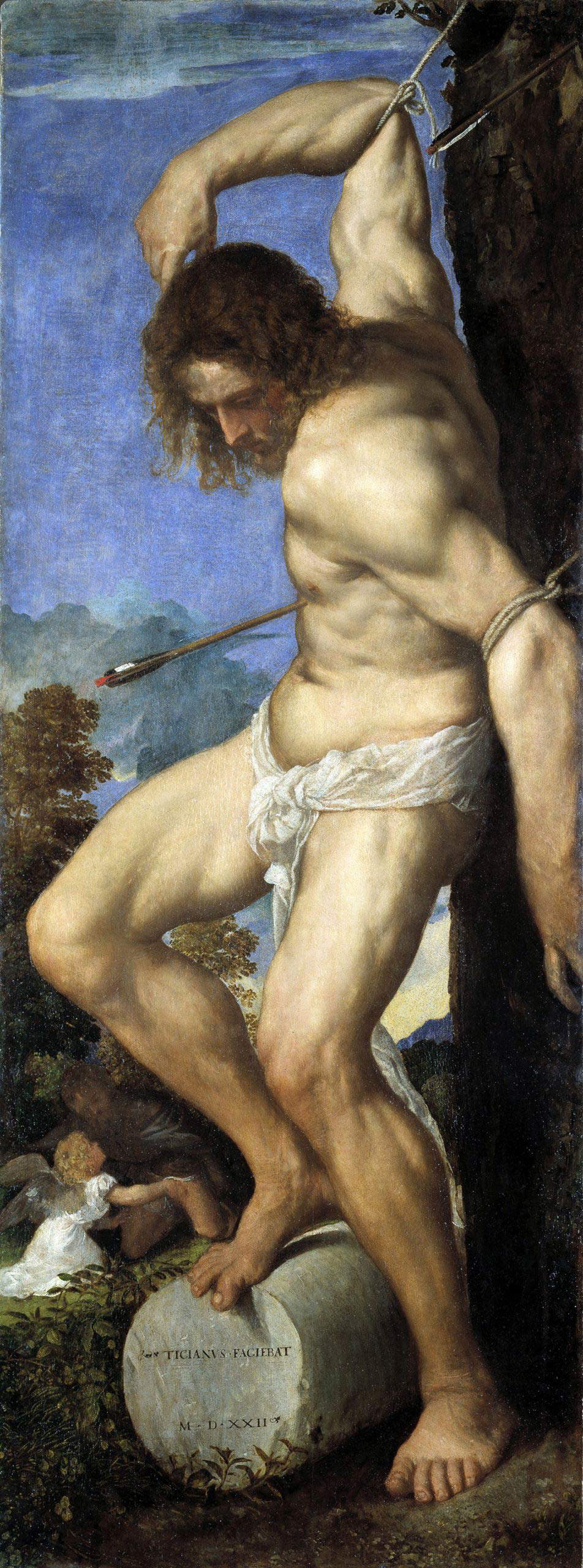
In the center of the Averoldi polyptych, Christ victorious with an athletic, twisting body rises up to heaven with great energy holding in his right hand the crusader banner, a symbol of triumph over death. Jesus’ body has nothing to do with the classical statuary power of the kouros or, without going too far from Titian, of the full, static volumetry of Piero della Francesca’s famous Resurrection (1458-1474). The sensitive artist from Cadore chooses to depict a man who is energetic yes, but incredibly real, made of flesh, and whose sculptural physicality derives from studies of the Laocoon group, found on January 14, 1504. Jesus, with strength, manages to triumph over death in the dawn of a new day by landing in a stormy and dramatic sky as never before seen in a resurrection. The artist chooses not to propose the classic luminous ether typical of resurrections, and recreates one of those skies he had been able to observe in the Veneto and during long travels in the Po Valley. A dramatic sky, streaked with red light, and against which he makes a Christ appear as pure energy.
Strong and powerful body, that of Christ as well as that of St. Sebastian on his right, but one is victorious in the heavens and in the world, the other is caught in the moment of victory. Saint Sebastian (Tibaldi had noted this well) is one of the artist’s most poignant and perfect male nudes. A martyr with no more hope, dying and feebly clinging to a glow of life and caught in the fleeting moment of the approaching end. The exhausted saint is clinging to a tree with a thick rope and presents the same but contrary, defeated energy as the risen Christ.
Under his bent right leg, one glimpses an angel intent on dialogue with St. Roch, venerated by Brescians along with St. Sebastian as a protector from plagues. Only of the martyr pierced in the side by the arrow, and of no other character in the polyptych, are known physiognomic studies that report how Titian pondered for a long time before his actual transposition on panel. The anatomical setting and structure draw heavily from the teachings of the great Michelangelo with his Prisoners (dating from 1513 and intended to be part of the tomb of Julius II), especially in the muscles in tension and in the right foot raised off the ground and resting on the rocchio of a column bearing the inscription “TITIANVS FACIEBAT” followed by the date “M-D-XXII.”
Titian, with the St. Sebastian, arrived at a perfect synthesis of Michelangelo-esque classicism, the light that descends the palette mingling with the color, and the naturalism exaggerated in the moving detail of the abandoned flesh of the right arm that seems to cut like butter against the thick weave of the rope. Another element, then, that contributes to making the Averoldi Polyptych one of the most significant chapters in Titian’s art. This great work is a powerful and incredibly real resurrection, so much so that it almost seems as if one is inhabiting it, that battle, and totally immersed in the poignant perfection created by Titian when he was only 30 years old.
Warning: the translation into English of the original Italian article was created using automatic tools. We undertake to review all articles, but we do not guarantee the total absence of inaccuracies in the translation due to the program. You can find the original by clicking on the ITA button. If you find any mistake,please contact us.